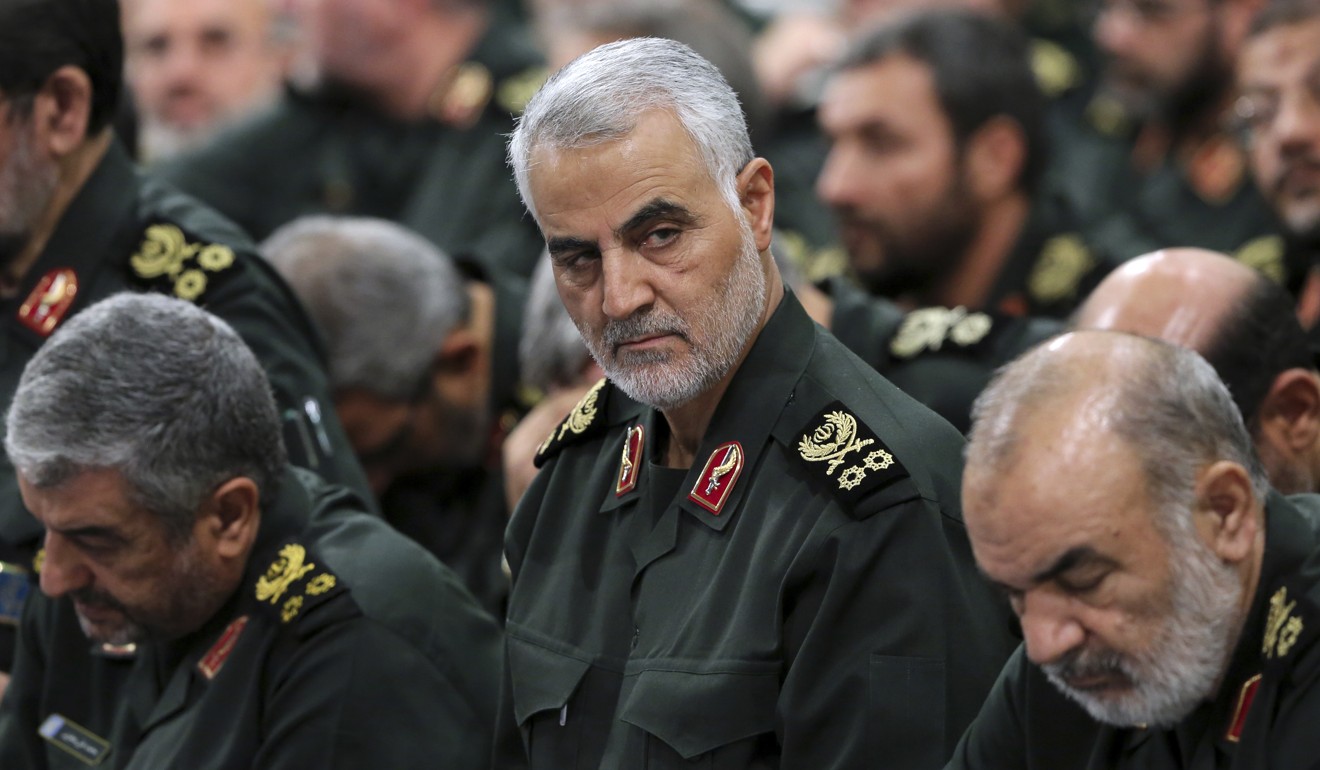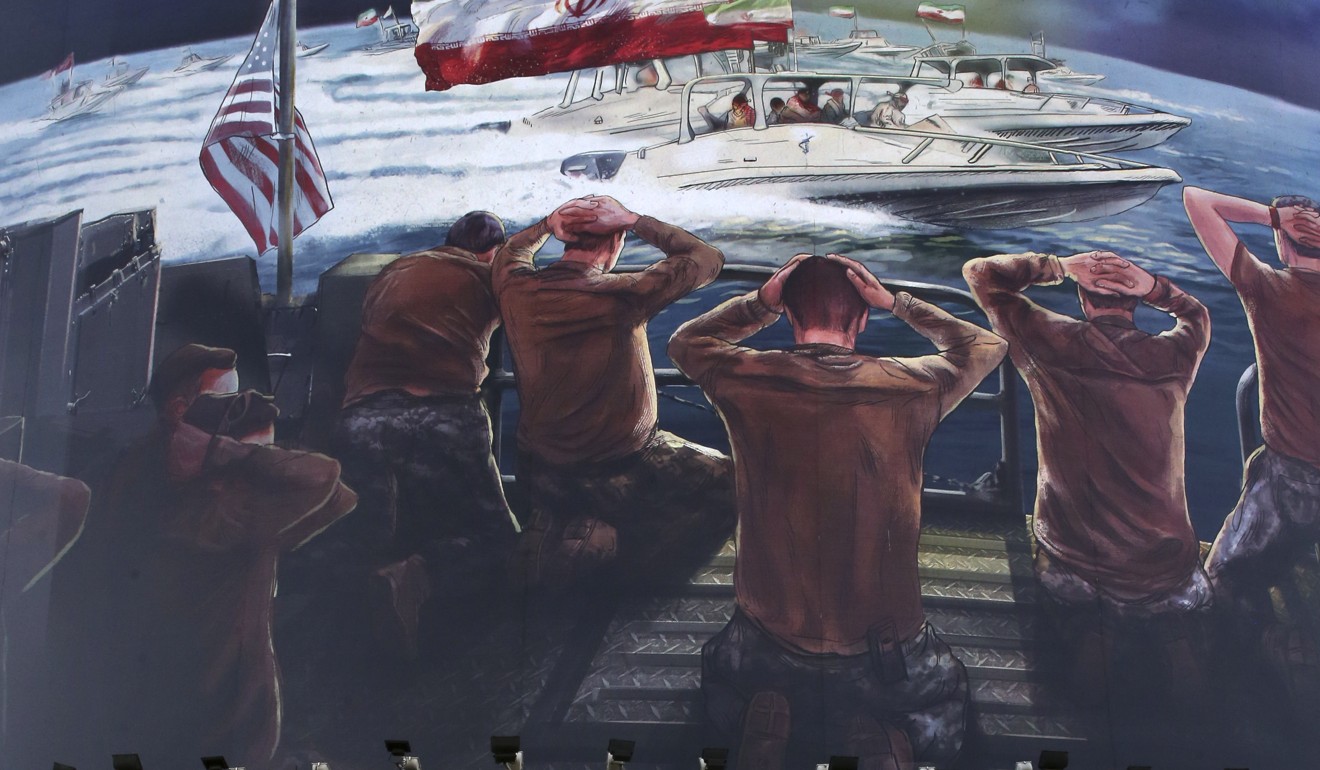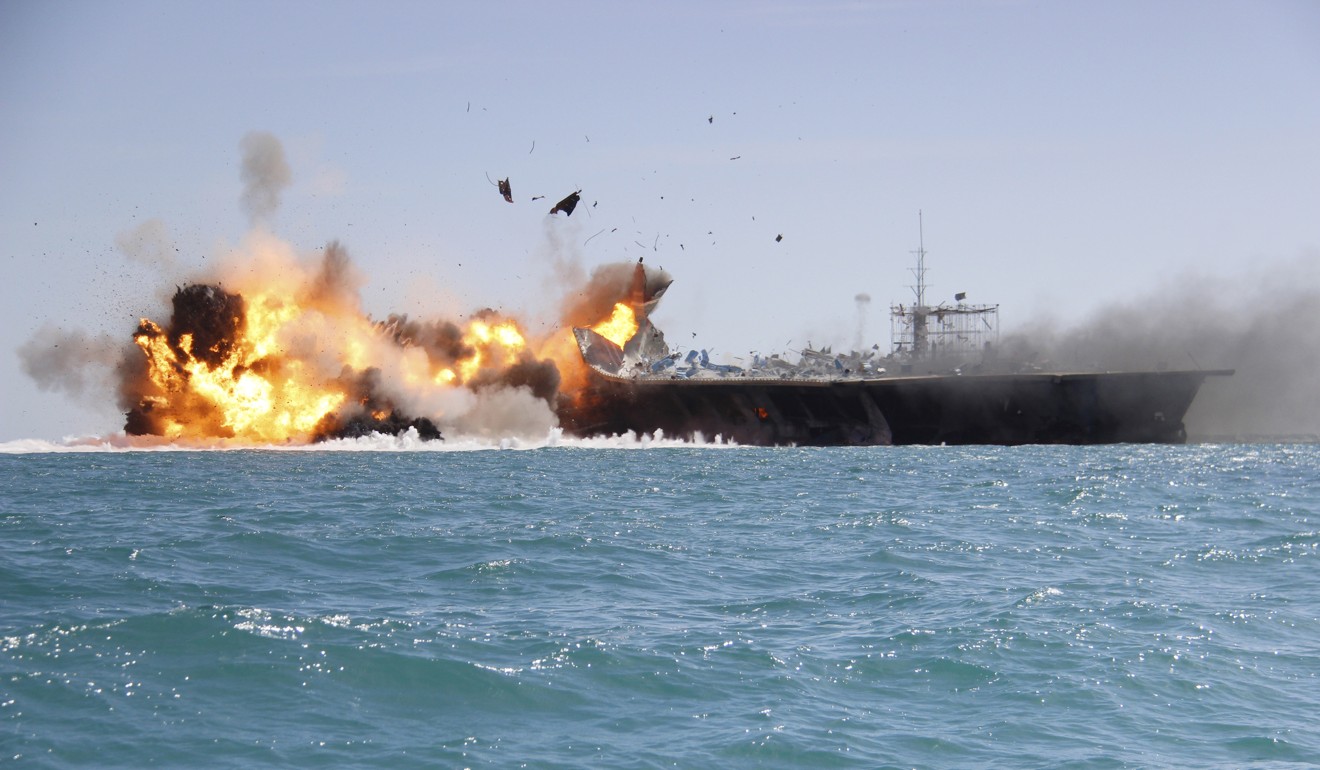
‘Corrupt terror force’: Iran's powerful Revolutionary Guard comes under fire from Trump
The Revolutionary Guard is an official branch of Iran’s armed forces, although it commands proxy forces in the region and wields vast political and economic influence
Once a ragtag force protecting Iran’s nascent Islamic regime, the Iranian Revolutionary Guard Corps is now the nation’s most powerful security institution – and it has come under fire from the Trump administration.
Trump announced targeted sanctions on the IRGC, a key instrument of Tehran’s military and foreign policy that the president described as “the Iranian Supreme Leader’s corrupt personal terror force and militia”.
In his policy speech Friday, Trump referred to Iran as a “dictatorship” with a “long campaign of bloodshed”.
“The regime remains the world’s leading state sponsor of terrorism,” he said, adding that he would order the US Treasury Department to designate Iran’s Revolutionary Guard Corps as a supporter of terrorism.
Watch: Trump says Iran not living up to spirit of nuclear deal
But the US leader backed away from designating the IRGC as a terror group, a move that would have triggered a slew of sanctions and almost certain Iranian retribution.
It had already previously been sanctioned by the United States under other authorities, and the immediate impact of Friday’s measure was likely to be symbolic.
“If US officials commit this strategic mistake, the Islamic Republic of Iran will surely reciprocate,” Iranian Foreign Minister, Mohammad Javad Zarif, said this week of any measures to further target the Revolutionary Guard.
“The IRGC is an honour for our country and a guarantor of the defence of our homeland.”
First founded following the 1979 revolution, in which a cleric-led uprising overthrew the shah, the IRGC was an ideological enforcer for the new Islamic government.

Now, while still loyal to Iran’s supreme leader, they affect almost every aspect of Iranian life.
With between 120,000-150,000 active personnel, the IRGC has land, sea and air defence capabilities, including domestic paramilitary forces and a ballistic missile arsenal.
Its elite Quds Force, which the US Treasury Department designated a terrorist organisation in 2007, is responsible for external operations.
At home, the IRGC controls an extensive network of shock troops known as “basij”, giving them eyes and ears in just about every corner of the country.
“The IRGC has now eclipsed [Iran’s] conventional forces,” the Rand Corp. wrote in a policy paper for the US Air Force in 2009.

“It operates substantial and independent land, sea and air forces,” Rand said, and “maintains tight control over the development and deployment of Iran’s ballistic missiles.”
Its forces are no real match for the US military in any conventional conflict, but the IRGC has honed its skills in asymmetric warfare and could retaliate against US troops on the Iraqi or Syrian battlefields.
But while the IRGC has expanded militarily, it has also evolved into a powerful political and economic actor, holding sway over everything from foreign policy to domestic policing and even major energy investments.
Current and former guardsmen hold critical posts across the government.
“For over three decades, the hardest of the hardliners have been in charge of Tehran’s foreign and security policy,” said Behnam Ben Taleblu, Iran expert at the Foundation for the Defence of Democracies.

“And that will continue to be the case.”
The US Navy regularly has direct, tense encounters with Revolutionary Guard vessels in the Persian Gulf and the Strait of Hormuz, the narrow waterway at the Gulf’s mouth through which a third of all oil traded by sea passes.
Its speedboats race alongside US aircraft carriers, while it also has flown drones over US warships and near US fighter jets.
Those encounters have stepped up since the 2015 nuclear deal, a direct sign of hardliners’ displeasure over any warming ties with the West. Iran has more than 2,000 kilometres of shoreline facing the Gulf and the Sea of Oman.
The IRGC oversees Iran’s ballistic missile programme and has conducted several tests since the nuclear deal.
While the atomic accord does not specifically stop those tests, US officials have said they violate the spirit of the deal.
The missiles can reach Israel, an American ally in the region. In March 2016, the IRGC launched a ballistic missile bearing the words “Israel must be wiped out” in Hebrew.
Iranian President Hassan Rowhani criticised the Guard over such missile launches during his re-election campaign this year, but has since embraced the group.
Defying Trump, Iran’s pragmatist Rowhani backed the IRGC, saying the elite force would continue its fight against “regional terrorists”
“The IRGC has always protected our nation against terrorists. … It will continue to help oppressed nations in the region,” Rowhani said.
Iran accuses its regional rival US ally Saudi Arabia of fuelling regional tension and the Sunni Muslim kingdom is at odds with Tehran’s revolutionary Shiite leaders in struggles across the Arab world, including Syria, Yemen, Iraq, Bahrain and Lebanon.
The Washington Post, Associated Press, Reuters
